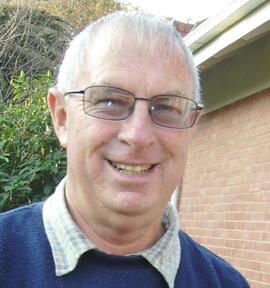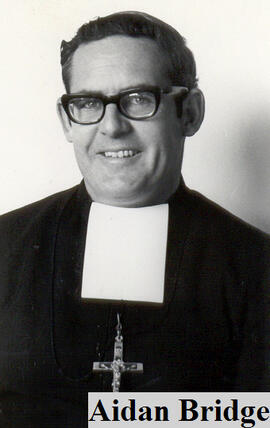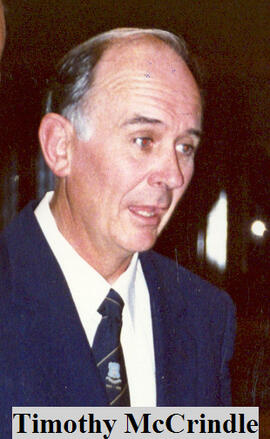Brother Jude
Br Jude started teaching at Marist Observatory in 1963 and subsequently from 1965 until 1974, he was
stationed at Walmer, Port Elizabeth. He was appointed Brother Provincial at the end of 1974, at a time
in when the brothers were grappling with a number of issues. Among others, there had been a drop in
the number of pupils attending the schools, a declining number of brothers and discussion about the
possible consolidation of some schools. Already in the second half of the sixties, to assist with the
running of the schools, advisory committees were introduced. These were followed in due course by
administrative boards and finally the board of governors
In the early 1970’s there was discussion among the congregations of sisters and brothers running the
Catholic schools in South Africa about the desegregation of “white” Catholic schools .While already in
1957 the Catholic Bishops Conference had declared that “Apartheid was intrinsically evil”, other than
attendance at Church services and gatherings, Catholic institutions had, by and large, remained racially
separate.
While a few schools had already admitted black children at the start of the 1975 academic year, ironically
it was the South African government itself which provided a catalyst. In the early 1970’s,the government
was desperately trying to establish diplomatic relations with other African countries and eventually
managed to do so with Malawi. This however presented a problem for the government when it came to
considering where the children of diplomatic staff were going to go to school. They could not be enrolled
at a “black state school” because of the dire standard of schooling in these schools nor at a “white state
school”, something which would have been completely contrary to state policy. The result was that the
government gave “permission” for the children to be enrolled at “white “Catholic schools. As a
consequence St David’s and St Theresa’s Convent School, Rosebank, were among those who admitted
the children of Malawian diplomatic officials in March 1975.
See article “Focus on the black child in search of education” by Linda Vergnani -Sunday Tribune, 16
March 1975.
Attempts to meet with the administrator of the Transvaal, Mr Sybrand van Niekerk, to discuss the
admission of local black pupils to “white” Catholic schools proved futile. This resulted in Catholic schools
in the Cape and the Transvaal quietly admitting black pupils.
Early in 1977 the media broke the story about the number of black children that were being educated in
“”white” Catholic schools in the country. This resulted in the administrators of the Transvaal and Cape
Provinces both issuing statements that all children admitted illegally should be removed immediately and
the schools would face deregistration. The then minister of national education, Piet Koornhof, intervened
and a series of meetings followed. These finally resulted in a cabinet decision in December 1977 that
while the government could not condone what Catholic schools had done, the children who had been
admitted illegally could remain in the schools but there would be no more admissions without the
express permission of the provinces. Application with full motivation had to be made for each and every
pupil. The Catholic schools were informed of the cabinet decision and were encouraged to submit their
applications before the beginning of the new academic year in January 1978. In the Cape all but one
application, due to reasons of age, were accepted. In Natal there were not many applications but all
submitted were accepted. In the Transvaal, by the day before schools were due to reopen, no response
had been received from the provincial authorities. At a hastily convened meeting of the provincials and
principals concerned a decision was taken to go ahead with the admission of all pupils whose names
had been submitted. On the day that schools reopened, school inspectors descended on the school to
check on admissions.
This resulted in further meetings with both the administrator and the minister with the Catholic schools
standing firm on their admission of children regardless of racial classification. These meetings continued
over the next few years with the Catholic schools continuing to admit pupils with ongoing opposition from
the Transvaal authorities. Finally, towards the end of 1982 legislation was passed which allowed the
admission of black pupils to schools registered with the provincial education departments.
For years the private schools in South Africa registered with the provincial education departments had
struggled with the government for school subsidies, these were finally granted in the early 1980’s. Not
long thereafter the government attempted unsuccessfully to use the subsidies to enforce a quota system
on the admission of black children.
From mid-1980 opposition to apartheid and its structures increased significantly resulting in the
declaration of two states of emergency. In an attempt to crush opposition the state security forces
targeted the Congress of South African Trade Unions, the South African Council of Churches and the
Catholic Bishops Conference. Within a space of months COSATU House, Khotso House, the
headquarters of the South African Council of Churches and Khanya House, the headquarters of the
Catholic Bishops Conference were destroyed.
The 70’ were tough times for the brothers and the Marist schools in South Africa, times requiring much
consultation and discernment. The brothers looked at their number and ages (at the end of 1974 there
were 68 Brothers in SA) and realised that the majority were likely to lose, through death, the majority of
the brothers in the province at the time within the twenty years or so. The situation was aggravated by
the small number of local vocations and the fact that there were no longer brothers coming to South
Africa from Europe. They were also faced with the fact that there were fewer brothers available to take
on positions of responsibility. Also of concern were the very significant discrepancies in facilities between
black and white Catholic schools. They were also conscious of the call of Vatican 2 for lay people to be
given their rightful place within the church and church structures and felt the need to honour it and allow
lay people to take on positions of authority within their schools. This eventually resulted in the first lay
headmaster being appointed to a Marist school in South Africa, Linmeyer in 1977. This proved to be very
controversial and took some years before the appointment of lay people to senior promotional posts was
accepted. Another move was that of withdrawing brothers from senior Marist school positions and
making them available to work within black Catholic schools where there a significantly greater need.
Thus Br Anthony left St David’s and together with Br Christopher, went to set up a mission in Slough, a
resettlement area on the edge of the Kalahari. Some people incorrectly interpreted these initiatives as
signs that the brothers were abandoning the “white” community.
The brothers also had to face two other significant challenges besides the matter of opening all
promotional posts to lay people and the withdrawal of brothers from the other schools to make brothers
available in areas of greater need, namely the issue of co-education and the desegregation of the
schools already referred to earlier. With the pending closure of several convent schools in the 1980’s
because of the declining numbers of religious sisters, the question arose whether the brothers would be
prepared to admit girls to what were at the time their “boys” only schools. The brothers were open to the
schools becoming co-educational institutions, a position not shared by all the members of the Marist
family. The first of the Marist schools in South Africa to become co-educational was Sacred Heart
College, Observatory. This followed decisions taken by the Ursuline Sisters and Holy Family Sisters to
close their schools and link up with what was at the time Marist Observatory. When the La Rochelle
Convent school was due to close there was some initial opposition from the board at Linmeyer but this
gave way and Marian College, Linmeyer, became co-ed as well. In the 1970’s and 80’s pupil numbers
dropped at both St David’s and Rosebank Convent and the respective school authorities looked into
integrating the two schools. For a variety of reasons this was not pursued.
Brother Jude was Brother Provincial from 1974 until 1983. In 1985 he was asked by the Catholic Bishops
Conference to set up the Catholic Institute of Education which thirty years on, continues to provide a
great service to the Catholic schools in the country. At the time he was a member of the St David’s
community. In 1988 he was asked to take over as Secretary General of the Bishop’s Conference of
Southern Africa, a position he held until 1995 when he was again appointed as Provincial of South
Africa. In 1998 a series of consultations took place within the Southern African region to form a single
Marist Province in Southern Africa. In April 1999 these resulted in the formation of the new Province of
Zambia and Zimbabwe. A year later Angola became the sixth country to be a member of the Province.
Br Jude served as Provincial of the new province from 1999 until 2004.
The issue of the sale of land where the “Inandas” now stand was in reality necessary as the brothers and
schools were experiencing a very tough financial situation at the time. The school was only using a
portion of the land available to it and the question was whether the school would actually need the corner
section in the future. The property was in fact zoned as agricultural at the time with its corresponding
property evaluation. The brothers looked at various ways of handling the sale. What was finally entered
into was an agreement with a developer which allowed for the brothers to benefit from the progressive
development of the property. In terms of the partnership arrangement that was entered into, the brothers
gained not just from the initial sale of the property as agricultural land but from each successive stage of
the whole development process as the land was rezoned and the units were finally sold.
July 2015







